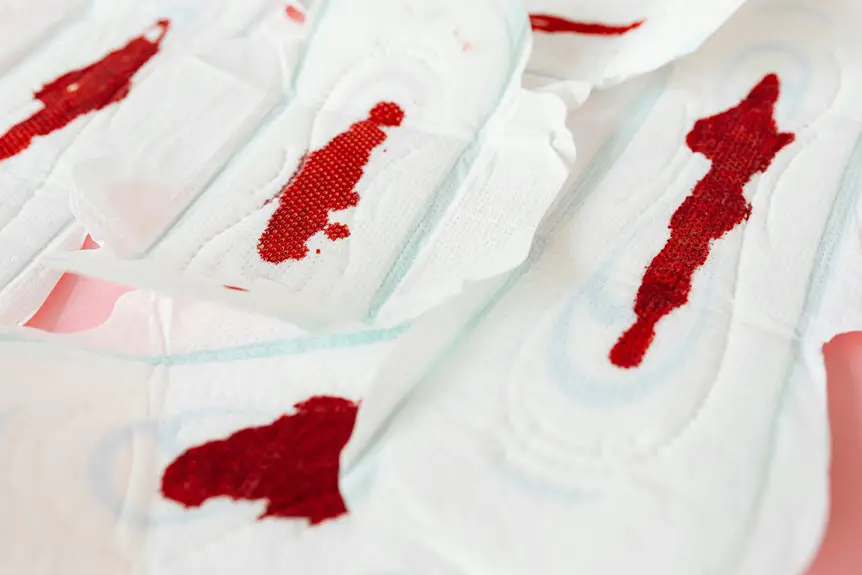If you’ve got a fresh blood stain on your silk bedding, act fast! Blot the stain gently with a clean, white cloth and don’t rub it. Rinse cold water from the back of the fabric to push the stain out. For soaking, use cold water for about 30 minutes, then rinse again. A mild soap solution or a salt paste can also help lift the stain. Find out more effective methods to guarantee your silk stays in great shape!
Table of Contents
Key Takeaways
- Act quickly by blotting the blood stain with a clean, white cloth to absorb excess liquid without rubbing.
- Rinse the back of the stain with cold water to push out the blood and prevent it from setting.
- Soak the stained area in a bowl of cold water for 30 minutes to help lift the stain.
- Use a mixture of cold water and a few drops of mild dish soap to treat the stain, rinsing thoroughly afterward.
- Consider applying a salt paste or diluted hydrogen peroxide, testing in an inconspicuous area first to avoid damage.
Immediate Actions to Take
When you discover a blood stain on your silk bedding, it’s essential to act quickly to prevent permanent damage.
First, take a deep breath and don’t panic. Grab a clean, white cloth or paper towel and gently blot the stain to absorb as much blood as possible. Avoid rubbing, as this can spread the stain and damage the fabric.
Take a deep breath, gently blot the blood stain, and avoid rubbing to protect your silk bedding.
If you can, run cold water over the back of the stain to push it out without letting it set in. Always use cold water, as hot water can make the stain more stubborn.
Make sure to keep the fabric as dry as possible during this process. Your swift actions now can save your silk bedding from lasting harm.
Effective Soaking Techniques
After you’ve blotted the blood stain and rinsed it with cold water, soaking the affected area can help lift the stain further.
Start by filling a bowl with enough cold water to fully submerge the stained section of your silk bedding. If you have a clean sink or bathtub, that works great too.
Gently immerse the fabric for about 30 minutes, allowing the water to penetrate the fibers. Make sure to check the stain periodically; if it begins to lift, you’re on the right track.
Avoid wringing or scrubbing the silk, as this can damage the delicate fibers.
Once soaking is done, rinse the area again with cold water to remove any remaining blood residue.
Recommended Mild Cleaning Agents
To effectively treat blood stains on silk, selecting the right mild cleaning agents is essential. You’ll want to avoid harsh chemicals that could damage the delicate fabric.
Instead, consider using gentle options like a mixture of cold water with a few drops of dish soap. This solution can help lift the stain without harming the silk fibers.
Additionally, you might find that a small amount of hydrogen peroxide diluted with water works well, but always test it on an inconspicuous area first.
Another option is using white vinegar mixed with water, which can break down the stain gently.
No matter which agent you choose, act quickly to prevent the stain from setting, and always rinse thoroughly with cold water afterward.
Using Salt-Based Solutions
If you’re looking for an effective way to tackle blood stains on silk bedding, salt-based solutions can be surprisingly helpful.
Salt works by drawing moisture out of the stain, making it easier to lift. Here’s how you can use it:
Salt effectively draws moisture from blood stains, simplifying the removal process.
- Mix salt with cold water: Create a paste using two tablespoons of salt and a cup of cold water.
- Apply gently: Dab the paste onto the stained area using a clean cloth. Avoid scrubbing, as silk is delicate.
- Rinse carefully: After 30 minutes, rinse the area with cold water to remove the salt and any remaining blood.
Alternative Methods for Stain Removal
While salt-based solutions can be effective, there are other methods to contemplate for removing blood stains from silk bedding.
One popular option is hydrogen peroxide. Just dab a small amount on the stain and gently blot with a clean cloth. Make sure to test it on a hidden area first to avoid damage.
You might also consider using cold water mixed with a bit of gentle detergent. Apply this solution to the stain, and softly rub it with your fingers.
For stubborn stains, an enzyme-based stain remover can work wonders, breaking down the proteins in the blood.
Remember to rinse thoroughly with cold water afterward, and avoid using hot water, as it can set the stain.
Frequently Asked Questions
Can I Use Warm Water for Blood Stains on Silk?
When tackling blood stains, warm water can feel like a gentle breeze, but it’s risky for silk. You’d better stick to cold water to avoid setting the stain and preserving your fabric’s beauty.
What if the Blood Stain Is Dried?
If the blood stain’s dried, you’ll need to rehydrate it first. Try gently dabbing with cold water, then blot with a clean cloth. Avoid rubbing to prevent damage to the fabric. Patience is key!
Is It Safe to Machine Wash Silk After Treating Stains?
It isn’t generally safe to machine wash silk after treating stains. You risk damaging the delicate fibers. Instead, hand wash gently with cold water using a mild detergent, or consider dry cleaning for the best results.
How Can I Prevent Future Blood Stains on Silk?
To prevent future blood stains on silk, you should handle sharp objects carefully, keep first aid supplies handy, and avoid rough activities while wearing silk. Regularly check for potential hazards to protect your delicate fabrics.
What Should I Do if the Stain Persists After Cleaning?
If the stain persists after cleaning, you should try a gentle stain remover designed for silk. Apply a small amount, test it on a hidden area first, then gently blot the stain until it lifts.
- How to Style an Ikat Blouse or Dress - June 28, 2025
- The Intricacy of Japanese Double Weft Ikat - June 28, 2025
- Is Ikat Fabric Sustainable? An Eco-Friendly Perspective - June 28, 2025







